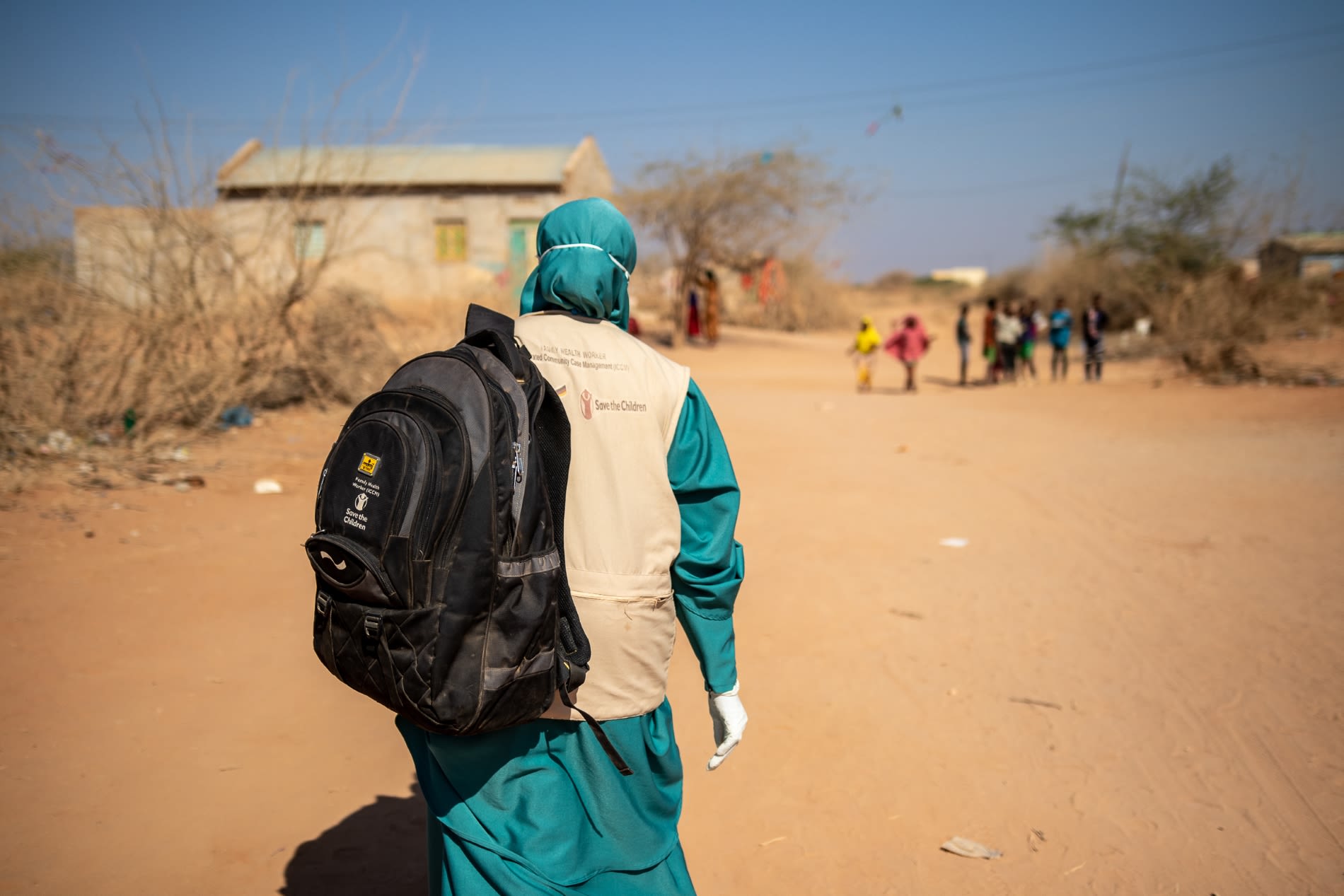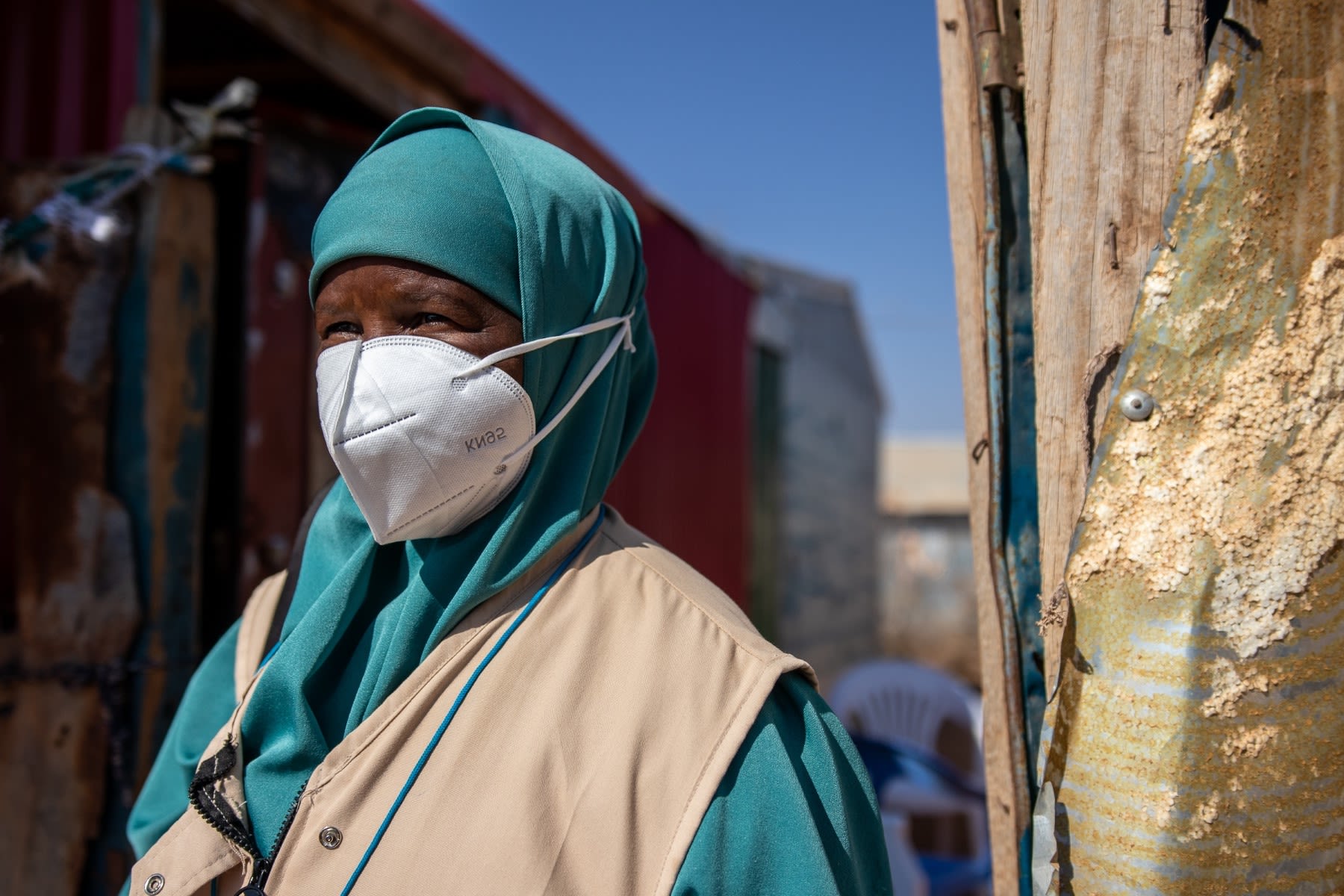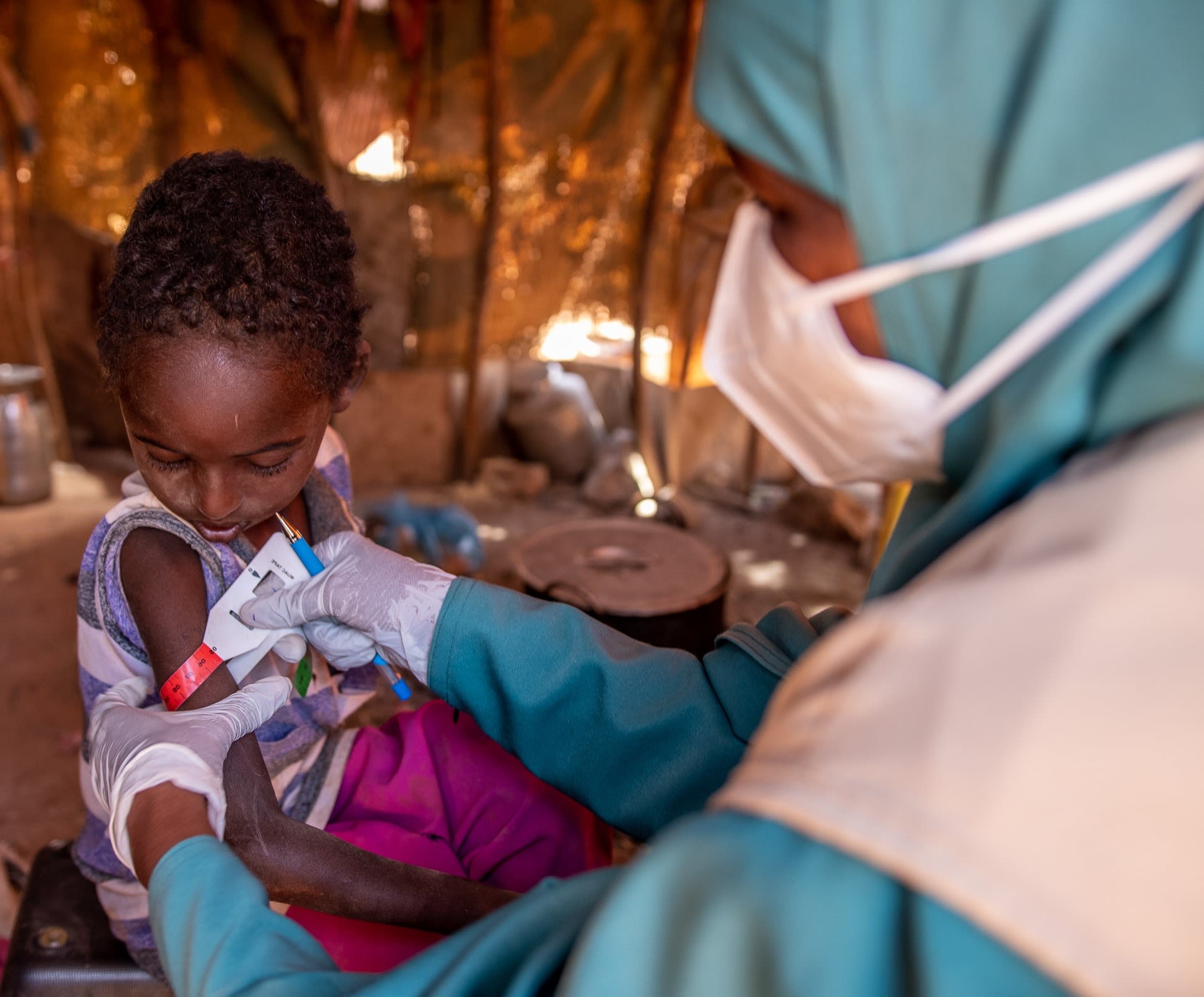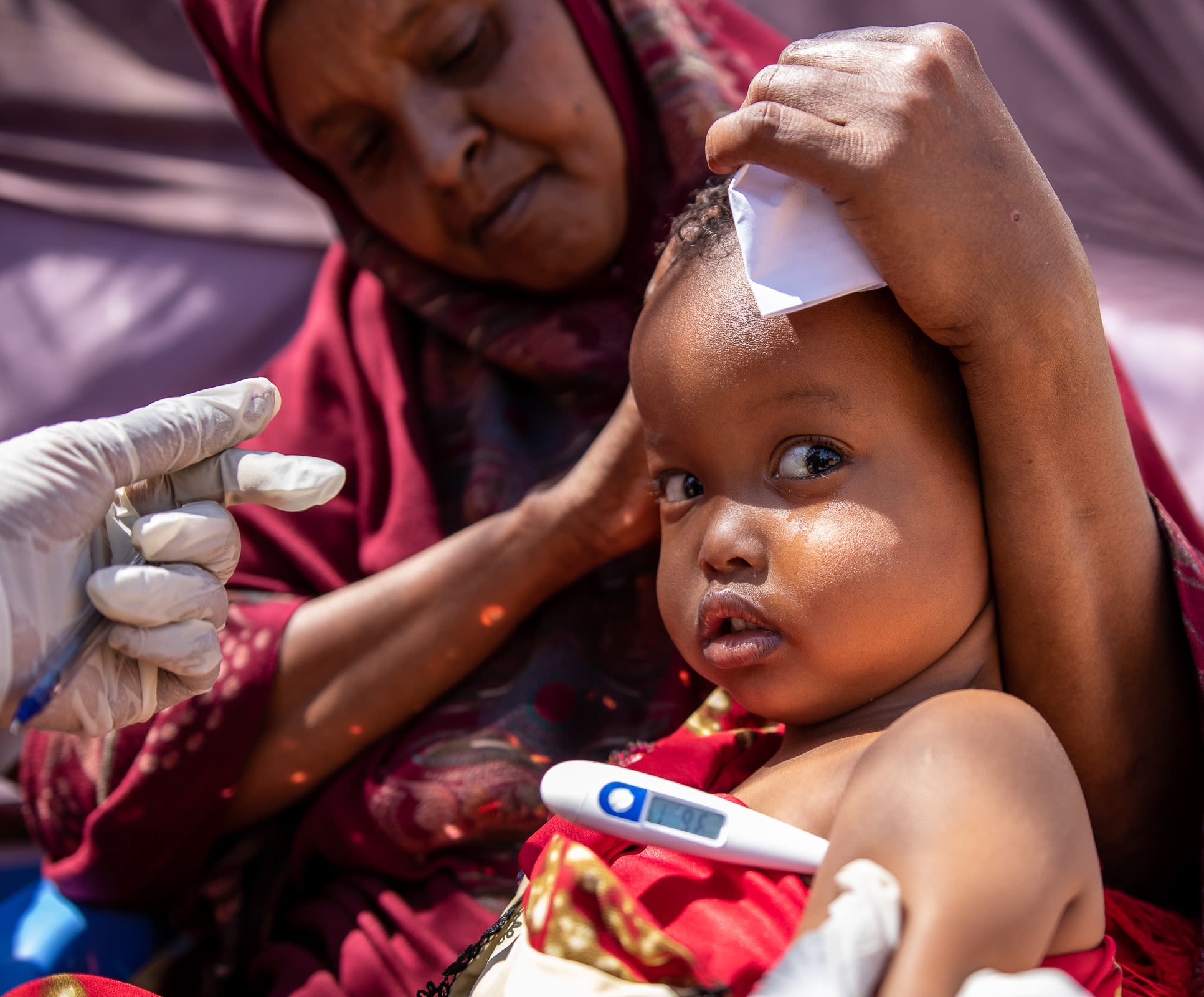A Day in the Life of a Health Worker in Somalia

What is the situation for children in Somalia?
Children and their families in Somalia have experienced an increasing number of climate-related disasters over the last few decades, ranging from long-lasting droughts to devastating floods, locust infestations and even cyclones.
This growing climate crisis coupled with the decrease in grain imports due to the war in Ukraine and a global rise in the cost of living has led to:
Food insecurity, increased water shortages, widespread disease outbreaks, displacement and a drastic reduction in household incomes across Somalia.
Children and their families struggle to cope as they have no time to recover before the next crisis hits.
A group of women and children waiting in line to buy water in Baidoa, Somalia. Photo: Fredrik Lerneryd / Save The Children.
A group of women and children waiting in line to buy water in Baidoa, Somalia. Photo: Fredrik Lerneryd / Save The Children.

Meet Muna
42-year-old Muna is a Family Health Worker with Save the Children in Somalia. This photo essay follows a day in her life supporting children and their families.
Health workers like Muna, work tirelessly every day in Somalia to make sure every child gets an opportunity at life.
They have become a lifeline for thousands of children who have become malnourished or fallen ill with preventable diseases such as pneumonia.
Without their dedication, thousands of more lives would be lost every year to preventable diseases.
Health workers are children's heroes. They bring hope and colour to the lives of children. They deserve to be better supported and protected.
Continue scrolling or click the menu along the top to follow Muna around whilst she does her daily check-ups around the camp.


A day in Muna's Life
Time to set off
Muna prepares to start her day as a Save the Children Family Health worker. She has dedicated years of her life to helping some of the most vulnerable children to access healthcare.
In 2003 her family was forced to flee their home due to conflict and drought. Now almost 20 years later she is still living in the same camp for displaced people.
Muna goes door-to-door each day visiting families and assessing children under five and pregnant and breastfeeding women.
Children living in the camp are at risk because the living conditions are so bad and sometimes families cannot afford clean drinking water.
She screens children for malnutrition and refers them to Save the Children’s Maternal and Child Health (MCH) clinic for treatment, provides medication and informs families about the importance of vaccines and breastfeeding.

Treating Malnutrition
STOP 1: Muna visits Shuun and her granddaughter Hamda, 3, who was treated for malnutrition at a Save the Children clinic.
I’ve been here for about two years now. We moved because of the drought and because all our livestock died.
Muna really cares about the community and helps us a lot. Sometimes we don’t even know our children are malnourished and she helps us. She treats illnesses in our homes so we don’t have to travel to the clinic.
Save the Children’s Family Health Worker, Muna, provides Shuun and her grandchild Hamda, 3, with basic hygiene tips. Photo: Sacha Myers / Save the Children.
Save the Children’s Family Health Worker, Muna, provides Shuun and her grandchild Hamda, 3, with basic hygiene tips. Photo: Sacha Myers / Save the Children.

STOP 2: Four-year-old Adan is next on Muna’s list of patients to visit.
Adan – who also suffered from polio when he was younger – had severe acute malnutrition but is starting to improve. Safiya, Adan's mother said:
The children used to consume milk from our livestock but then because of the drought we couldn’t get the milk from the livestock. I feel like that’s when they started to get malnourished.
They were entered into a Save the Children malnutrition program where we got support with buying food and they gave the children peanut paste (therapeutic food).
I felt less worried when they started to get better. I get a lot of support from Muna because I wouldn’t have known what to do otherwise.
Muna provides Safiya, 1-year-old Edo and 4-year-old Adan with basic health recommendations. Photo: Sacha Myers / Save the Children.
Muna provides Safiya, 1-year-old Edo and 4-year-old Adan with basic health recommendations. Photo: Sacha Myers / Save the Children.


Curing Pneumonia
STOP 3: Muna’s next stop is at the home of two-year- old Suhuur who lives with her aunty Fosiya.
Suhuur was born with a disability and has difficulties walking and talking.
Fosiya used to support her extended family by buying and selling milk at the market. But since the drought, animals are not producing milk and it has greatly impacted on their income.
“When I visited this family recently, I noticed Suhuur was breathing rapidly. I used a timer to measure her breaths and knew that she was having trouble breathing. I diagnosed her with pneumonia and gave her the treatment”

Maternal Health
FINAL STOP: Muna finishes her day by visiting 15-year-old Ayan* and her mother Hinda.
Ayan is seven months pregnant with her first child and Muna has provided her with information on breastfeeding. Ayan has also visited Save the Children’s clinic to receive a prenatal check-up.
Today I learnt how to feed the child and to wash my hands before feeding. This is the first time I’ve received this information. I’m happy to know how to take care of my baby.
Muna, Family Health Worker, gives Ayan advice on breastfeeding and basic hygiene. Photo: Sacha Myers / Save the Children
Muna, Family Health Worker, gives Ayan advice on breastfeeding and basic hygiene. Photo: Sacha Myers / Save the Children
*Name changed to protect identity.

Share and read more
Without health workers like Muna, millions of people around the world would be unable to access the quality healthcare they deserve.
We must remind governments, and world leaders of the importance to protect and better support our health workers.
Share this blog using the buttons along the top to raise awareness about the importance of protecting our health workforce to achieve health for all.
Enjoyed this blog? Read more from our experts, thought leaders and voices for change.









